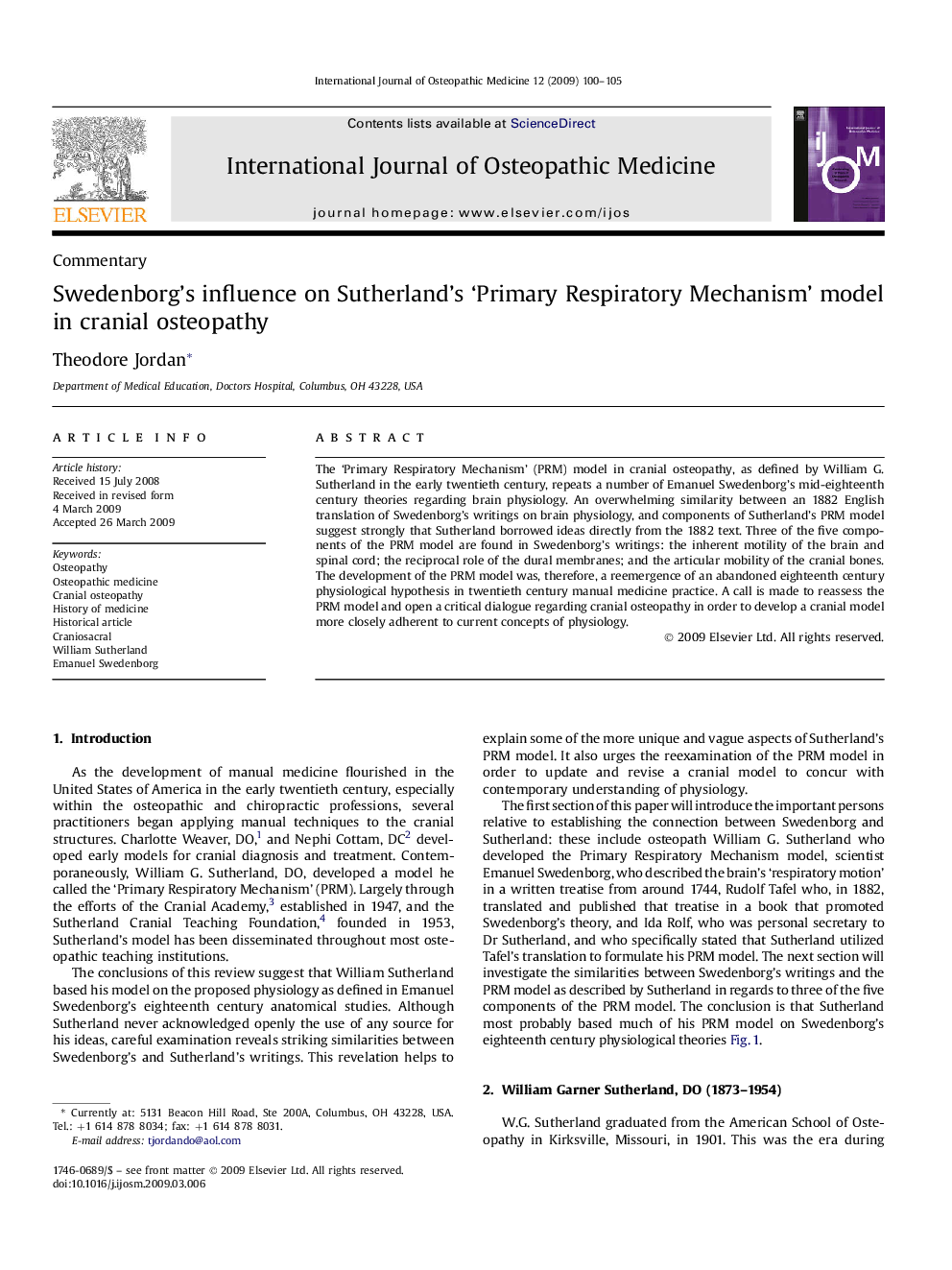| Article ID | Journal | Published Year | Pages | File Type |
|---|---|---|---|---|
| 2619100 | International Journal of Osteopathic Medicine | 2009 | 6 Pages |
The ‘Primary Respiratory Mechanism’ (PRM) model in cranial osteopathy, as defined by William G. Sutherland in the early twentieth century, repeats a number of Emanuel Swedenborg's mid-eighteenth century theories regarding brain physiology. An overwhelming similarity between an 1882 English translation of Swedenborg's writings on brain physiology, and components of Sutherland's PRM model suggest strongly that Sutherland borrowed ideas directly from the 1882 text. Three of the five components of the PRM model are found in Swedenborg's writings: the inherent motility of the brain and spinal cord; the reciprocal role of the dural membranes; and the articular mobility of the cranial bones. The development of the PRM model was, therefore, a reemergence of an abandoned eighteenth century physiological hypothesis in twentieth century manual medicine practice. A call is made to reassess the PRM model and open a critical dialogue regarding cranial osteopathy in order to develop a cranial model more closely adherent to current concepts of physiology.
